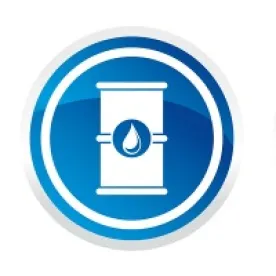The U.S. government recently announced plans for a number of regulatory initiatives in 2015 that will affect the oil and gas industry.
Planned Federal Regulations Target the Oil and Gas Industry
Twice per year, the U.S. government lists its regulatory plans. At the end of 2014, it announced its plans for the following regulatory initiatives affecting the oil and gas industry.
|
|
Regulatory Area |
Federal Agency |
Status |
|
1 |
VOC and Methane Emission Regulations |
Environmental Protection Agency (EPA) |
Prerulemaking |
|
Department of the Interior (DOI)/Bureau of Land Management (BLM) |
Prerulemaking |
||
|
2 |
Hydraulic Fracturing |
DOI/BLM |
Proposed Rule |
|
3 |
Royalty Rates for Onshore Leases |
DOI/BLM |
Prerulemaking |
|
4 |
Blowout Preventers |
DOI/Bureau of Safety and Environmental Enforcement (BSEE) |
Prerulemaking |
|
5 |
Arctic Drilling |
DOI/BSEE/Bureau of Ocean Energy Management (BOEM) |
Prerulemaking |
|
6 |
Transportation of Crude Oil by Rail |
Department of Transportation (DOT) |
Proposed Rule |
|
7 |
Renewable Fuel Standards |
EPA |
Proposed Rule |
This collection of initiatives serves as a preview of the Obama administration’s agenda for the oil and gas industry. As a result of the November 2014 election, in which several Senate Democrats from energy-producing states either retired or were defeated, these initiatives may become more prominent, allowing the Obama administration to pursue a regulatory agenda without necessarily having to consider the political fallout in those states.
1. EPA and BLM Regulation of VOC and Methane Emissions
On January 14, the EPA announced its plan to propose new performance standards requirements and technology guidelines in the summer of 2015 intended to reduce volatile organic compound (VOC) and methane emissions from oil and gas production.[1] The EPA is purportedly seeking to cut emissions by 45% of 2012 levels by 2025. The EPA is saving further details until the proposed rules are released, at which time the industry’s obligations and costs will become clearer.
The EPA announcement comes as no surprise, as the federal government and environmental groups increasingly have been focusing on VOC emissions, especially methane (which is a type of VOC), from natural gas operations. On April 15, 2014, one month after the release of the White House’s Strategy to Reduce Methane Emissions,[2] the EPA released five white papers laying the groundwork for new regulatory controls on VOC and methane emissions for certain stages of oil and gas drilling. The papers outline estimated emissions and proposed control technologies for the following sources:
|
Emission Sources |
Estimated Methane Emissions by EPA |
Proposed Control Technologies |
|
Liquids Unloading[3] |
14% of overall emissions from the natural gas production segment |
Plunger lifts |
|
Leaks[4] |
Approximately 500,000 metric tons (about 70% from gas production) in 2012 |
Portable analyzers, ambient/mobile monitoring, and leak repair |
|
Compressors[5] |
More than 2 million metric tons in 2012 |
Periodic replacement of rod packing systems for reciprocating compressors and dry seals for centrifugal compressors |
|
Completions[6] |
Estimated at 36,825 to 247,000 tons per year |
Reduced emission completions (RECs), a.k.a. “green completions;” gas reinjection; natural gas liquids recovery; and use for local power generation |
|
Pneumatic Devices[7] |
Estimated at nearly 2 million metric tons from pneumatic controllers and more than 500,000 metric tons from pneumatic pumps in 2012 |
Instrument air systems instead of natural gas–driven pneumatic controllers and zero bleed, mechanical, and solar-powered controllers instead of continuous bleed controllers |
Groups on both sides of the issue have proffered supporting evidence for their positions. Environmental groups have presented satellite imaging that they say shows atmospheric methane concentrations of approximately 1.3 million pounds per year, nearly 80% more than EPA estimates. These groups have pointed to the imaging as evidence of effects from oil and gas activities and the need for stronger regulation of methane air emissions. However, a number of researchers believe that the methane emissions shown by satellite imaging are actually due to leaks associated with coal bed natural gas and not from gas extracted through hydraulic fracturing.
Environmental groups also allege a high risk of methane infiltration into groundwater (which implicates emissions control because the methane would eventually make it into the air as well). But recent data shows that these concerns are unwarranted. Two U.S. Geological Survey studies[8]released in November 2014 found low to moderate concentrations of naturally occurring methane in private water wells in northeastern Pennsylvania ¾ 65% of the wells evaluated in Wayne County and 80% of the wells evaluated in Pike County showed detectable levels of methane.
Another recent report, released by researchers from Duke and Stanford Universities,[9] contends that any methane gas in water that results from natural gas activities stems from defective well cementing. Proper cementing eliminates that risk. In contrast to satellite imaging, which is inherently unreliable except in very gross terms, the Duke-Stanford research team reached its findings by using scientific methods, such as noble gas and hydrocarbon tracers, to identify the methane.
Overall, methane releases from natural gas activities have decreased. The EPA announced that the oil and gas sector has reduced greenhouse gas emissions from well sites, pipelines, and processing facilities, despite industry growth. According to the EPA, methane releases during hydraulic fracturing have decreased 73% since 2011, with most of that decrease attributable to technology improvements. The oil and gas sector as a whole has reduced methane emissions by 12% since 2011 and 16% since 1991; this would suggest that the EPA white papers’ reliance on emissions data from 2012 needs further review based on updated information.
The EPA rulemakings will be influenced by this research and ongoing debate. The EPA proposed rules will update its New Source Performance Standards for VOCs and create new ones that target methane. The performance standards will establish emission limits based on what the EPA determines to be the best air pollution control technologies, taking into account cost, energy needs, and other environmental and health considerations. The EPA will likely individually target the emission sources addressed by each of its white papers. It also plans to supplement its initiative by issuing Control Techniques Guidelines to serve as an emission control model for states that have failed to achieve mandatory limits on ozone (which is partly attributable to VOCs).
The BLM is also expected to release proposed rules for methane emission control, specifically for flaring and venting. The industry has requested that the BLM promulgate new rules that reduce the need, and thereby the cost, of flaring and venting.
Interested parties will have the opportunity to comment on all of these proposed rules once they are released.
2. BLM Proposed Rules for Hydraulic Fracturing
On May 11, 2012, the BLM published for public comment a proposed rule[10] governing hydraulic fracturing on federal and tribal lands that would require the disclosure of fracturing fluids, satisfaction of various well construction standards, and management of flowback waters. In May 2013, the BLM responded to industry feedback by revising the proposed rule[11] to allow companies to withhold disclosure of trade secrets and to submit cement logs after rather than before hydraulic fracturing.
But concerns about the proposed rule still remain. One outstanding issue is the proposed rule’s definition of “usable water.” Consistent with state rules and industry standards, operators would need to install casing at depths that protect usable water. But the proposed “usable water” definition of waters that contain up to 10,000 parts per million of total dissolved solids (ppm TDS) is generally considered to identify water that truly has no potential use because treatment (e.g., reverse osmosis systems) would be too expensive. Also, waters that contain up to 10,000 ppm TDS generally cohabitate in formations with oil and gas resources, thus, casing installation would have to encounter the target zones, which makes development impractical.
Certainly, such measures would come at significant cost and would discourage development on federal lands. In an October 6, 2014 meeting at the White House, representatives from the oil and gas industry requested that the Office of Management and Budget (OMB) block the final rule from being issued, explaining the burden it would place on the industry¾estimated at more than $1 million per well.[12]
The BLM expects to issue a final rule in January 2015.
3. The BLM May Increase Royalty Rates for Onshore Oil and Gas Leases
The BLM announced plans to issue an advance notice of proposed rulemaking regarding “whether and how the royalty applicable to new Federal onshore competitive oil and gas leases should be revised in order to better ensure a fair return to the public.” This language appears to confirm industry concerns of higher royalty rates.
As the BLM considers its rulemaking, it undoubtedly will consider a flurry of state-level royalty rate activity¾in the legislative halls, agency offices, and courthouses. For instance, on October 26, 2014, Pennsylvania Governor Tom Corbett signed Act 173, which will require drillers to submit production reports on a monthly basis instead of semiannually. Proponents of the law contend that the legislation will help landowners verify whether they are receiving accurate royalty payments from drillers. The proponents make no mention of the increased administrative costs to operators.
On August 26, 2014, West Virginia Governor Earl Ray Tomblin backed a plan to lease mineral rights beneath the Ohio River to oil and gas drillers. However, for the right to drill, operators would have to pay a 20% royalty on the oil and gas they extract. In addition to the royalty, West Virginia would also receive a per-acre lease payment with the highest bidder securing the lease. The program is now under way, and the West Virginia Division of Natural Resources has begun reviewing bids for leases in three counties.
Royalty litigation has also become an increasing risk for the oil and gas industry, particularly class actions. By pooling many landowners together into a single lawsuit, these actions often result in claims of tens and sometimes millions of dollars. In addition to the potential financial exposure, companies must also deal with undesirable media attention and effects on public image.
The BLM’s proposed rules are expected early this year.
4. DOI Blowout Preventer Rules
The DOI will soon issue proposed rules regulating blowout preventers, formalizing its response to the Deepwater Horizon incident.
Thus far, we have been given a few hints of what to expect. The proposed rules are likely to focus on technology, monitoring, testing, and training. Government agencies have repeatedly explored these areas of improvement, including at the DOI May 2012 technical forum and, more recently, in the U.S. Chemical Safety Board’s (CSB) failure analysis final report.[13]
Rather than just blow-out preventers, the proposed rules will likely address well design, well control, safe drilling margins, casing, cementing, real-time monitoring, and subsea containment. The broader scope could have greater effects than many originally anticipated.
The proposed rules are slated for release in February 2015, followed by an opportunity for interested parties to submit comments. The DOI projects a July 2015 finalization date, which may prove overly ambitious pending the volume of comments received.
5. Arctic Drilling Proposed Rules
The Arctic region bears significant resource recovery potential. Environmental groups strongly oppose the practice, however, and raise concerns regarding possible health, safety, and environmental risks. The DOI will soon publicly enter the debate with anticipated proposed rules that would be the first to specifically target drilling on the Alaska Outer Continental Shelf.
The proposed rules will likely require companies to have certain measures in place to effectively respond to a blown-out well situation. Members of the industry are concerned that the requirements could come at significant cost, reduce flexibility, and be entirely ineffective. At a recent meeting with the OMB, representatives from the oil and gas industry recommended that the rules be performance-based to achieve the greatest safety, effectiveness, and efficiency and also requested that the OMB’s cost review take into account real-world operations.
The proposed rules are currently undergoing final review by the OMB and are expected to be released early this year. Once released, interested parties will have an opportunity to submit comments.
6. DOT Crude Oil Rail Transport Proposed Rules
A series of recent rail oil tanker fires in the United States and Canada has spurred the DOT to further action. On May 8, 2014, the DOT issued an emergency order requiring railroads to inform state emergency management officials about the movement of large shipments of crude oil and urged shippers to cease using older model tank cars, including the DOT-111s. Because most of the tank cars required to be replaced are owned or leased by oil companies, the order has had a major influence on the industry.
On July 23, 2014, the DOT proposed regulations[14] that would place increased restrictions on flammable shipments by freight rail and push the industry to overhaul equipment used for those shipments. Among other things, the DOT is seeking comment as to whether higher-risk cargoes should be required to adhere to a 40-mile-per-hour speed limit at all times or in specifically identified “high-risk zones.” However, DOT proposals would allow operators to transport cargo trains at 50 miles per hour if they use newer, tougher tank cars. The DOT has defined “high-hazard flammable trains” as any trains that carry 20 tank cars or more of crude oil, ethanol, or other explosive liquids.
The DOT hopes to phase out the use of older DOT-111 models for such operations within two years. The proposal would require tankers built to transport hazardous liquids to meet new design standards by October 1, 2015. The comment period has closed and the final rules are expected soon.
7. Renewable Fuel Standards and Waiver Petitions
Every year, the EPA is required to update its Renewable Fuel Standards (RFS), which specify the percentage of gasoline by volume that must consist of renewable fuels. This year, the agency will likely attempt to address standards for 2014, 2015, and 2016.
The Energy Policy Act of 2005 established the Renewable Fuel Program, which required that increasing amounts of renewable fuel be blended into gasoline with a target of 7.5 billion gallons by 2012. The Energy Independence and Security Act of 2007 amended the earlier law, in relevant part, by increasing the requirement to 36 billion gallons by 2022. To meet the progressive volume requirements, the EPA is required to annually calculate and publish RFS. The 2014 RFS, proposed[15] on November 29, 2013, are expected early this year.
Compliance with the 2014 RFS may result in significant hardship for both the industry and the public. On November 29, 2013, the EPA sought comment on petitions[16] for a waiver of the 2014 RFS submitted by several industry groups and individual companies. The petitioners argued that the United States has hit the “blendwall”¾the point at which the RFS exceed possible domestic consumption¾and that compliance with the RFS would result in diminished fuel supplies and severe economic harm. The EPA indicated that it will likely issue the petition final rule and the 2014 RFS at the same time.
[1]. View the EPA press release here.
[2]. View the action plan here.
[3]. View the EPA report on liquids unloading here.
[4]. View the EPA report on oil and natural gas sector leaks here.
[5]. View the EPA report on natural gas sector compressors here.
[6]. View the EPA report on completions here.
[7]. View the EPA report on pneumatic devices here.
[8]. Sloto, R.A., 2014, Baseline groundwater quality from 34 wells in Wayne County, Pennsylvania, 2011 and 2013: U.S. Geological Survey Open-File Report 2014–1116, 24 p., available here; Senior, L.A., 2014, A reconnaissance spatial and temporal assessment of methane and inorganic constituents in groundwater in bedrock aquifers, Pike County, Pennsylvania, 2012–13: U.S. Geological Survey Scientific Investigations Report 2014–5117, 91 p., available here.
[9]. Darrah, T.H., 2014, Noble gases identify the mechanisms of fugitive gas contamination in drinking-water wells overlying the Marcellus and Barnett Shales, 6 p., available here.
[10]. View the proposed rule here.
[11]. View the revised proposed rule here.
[12]. See materials provided by industry representatives to the OMBhere.
[13]. View the report here.
[14]. View the regulations here.
[15]. View the proposed 2014 RFS here.
[16]. View the comment request here; view the American Fuel & Petrochemical Manufacturers’ petition here.






 />i
/>i

